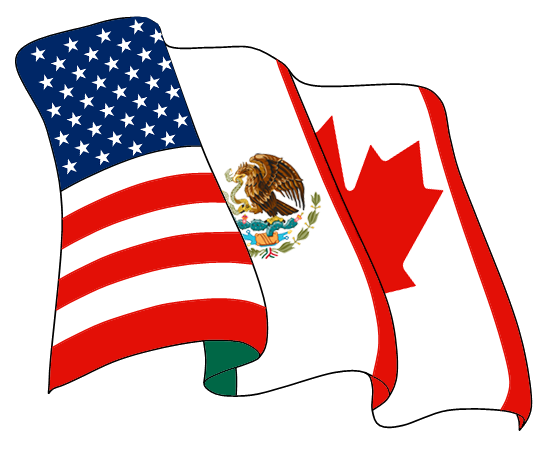USMCA: Sweeping changes for NAFTA 2.0

As of July 1, 2020 the United States-Mexico-Canada Agreement (USMCA) will modernize the North American Free Trade Agreement (NAFTA) which has been in effect for twenty-five years.
Some key points of the new trade agreement are as follows:
1. Rules for Manufactured Goods
The automotive industry is a focus of the new agreement, with provisions for both certification of origin, as well as labor.
The total North American content of a vehicle must equal 75% (up from 62.5%) by 2023.
70% of the steel, aluminum, and glass used in production of the automobile must originate in North America.
40% of an automobile and 45% of a light truck must be produced by workers earning an hourly wage of at least $16. While this could help North American workers, particularly those in Mexico, many economists are concerned this could drive up car prices and may lead to more cars being produced in Asia rather than North America.
2. Protection for Intellectual Property
The new agreement will increase the terms of copyright from 50 to 70 years beyond the life of the author. According to the USTR, the USMCA will “provide strong patent protection for innovators, enshrining patentability standards and patent office best practices to ensure that U.S. innovators, including small and medium-sized businesses, are able to protect their inventions with patents.” In theory, this will prevent competitors from producing inexpensive knockoffs.
There are also new provisions included to protect digital trade, prohibiting duties on such items as software, music, electronic books, videos, and games, a market in which U.S. manufacturers are typically very competitive.
3. De Minimis Provisions for Small Business
There is a chapter dedicated to smaller businesses which according to the Small Business Administration will “promote cooperation, to increase trade and investment opportunities.”
The USTR states that “New traders just entering Mexico’s and Canada’s markets will also benefit from lower costs to reach consumers.”
The cap under which goods can enter each of the countries duty-free has been increased. The new de minimis thresholds are as follows:
Canada - $150 CAD (customs duties) and $40 CAD (taxes)
Mexico - $117 USD (customs duties) and $50 USD (taxes)
United States - $800 USD
4. Sunset Clause
The terms of the USMCA shall expire after a period of 16 years, and are subject to review every 6 years, at which point the parties can choose to extend the agreement or withdraw altogether.
5. Increased Environmental Protections
The new agreement makes important environmental advancements, particularly regarding the protection of whales, fish, and marine wildlife from pollution and overfishing. Mexico agrees to increased monitoring to stop illegal fishing, and there will be enhanced verification to ensure that only legally harvested goods are coming from Mexico.
6. Documentation
It is worth noting that unlike the original NAFTA, there is no official government issued or approved document for USMCA Certification of Origin, which has created some initial confusion.
Per the text of the agreement, all certifications must contain a set of “minimum data elements”.
We are making forms and instructions available as a service to our customers.
USMCA Certification of Origin WFC - Instructions.pdf
USMCA Certification of Origin WFC - Primary.pdf
USMCA Certification of Origin WFC - Extended Description of Goods.pdf
